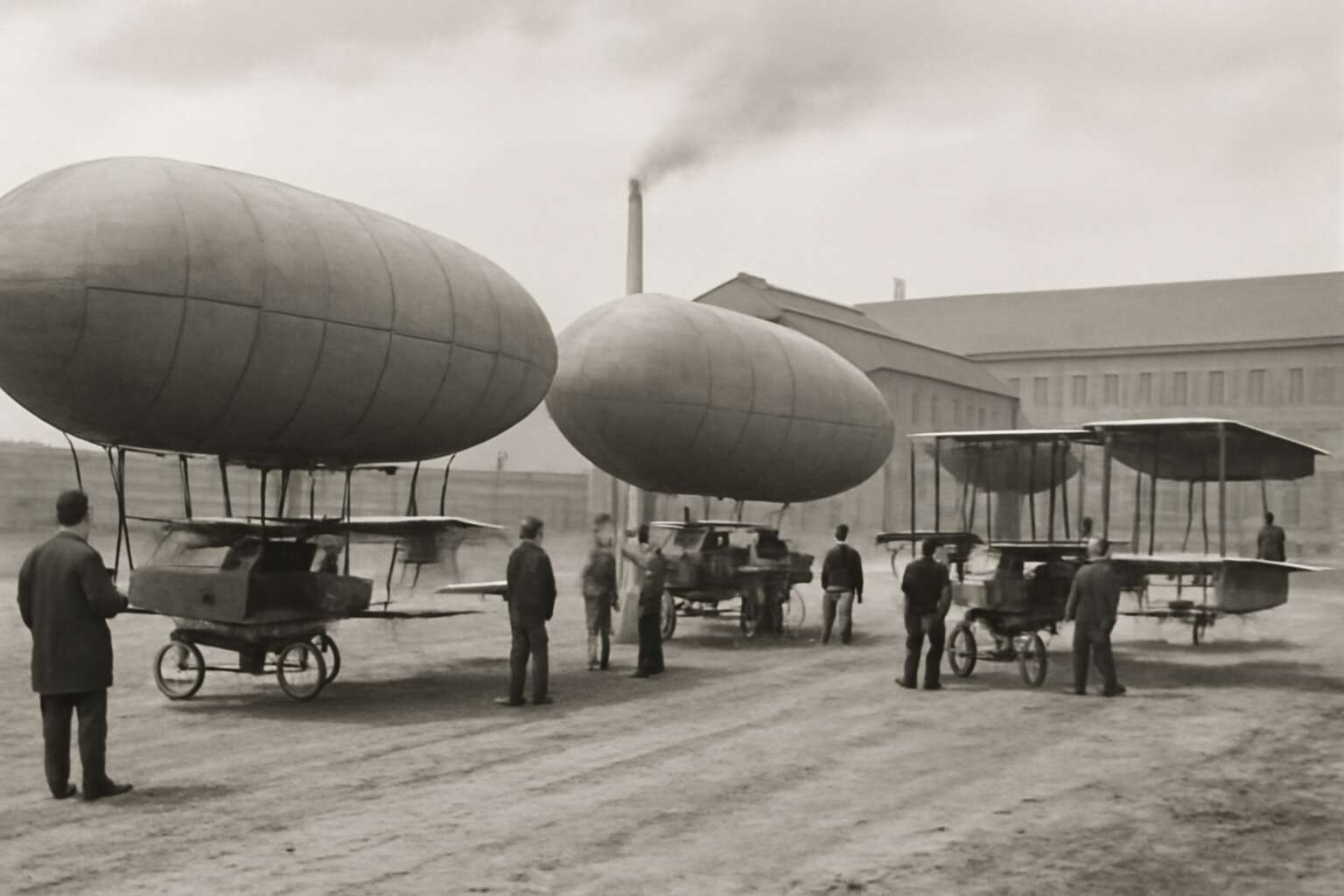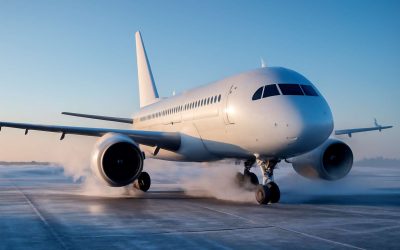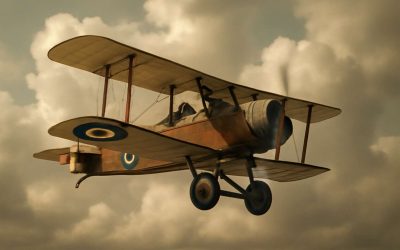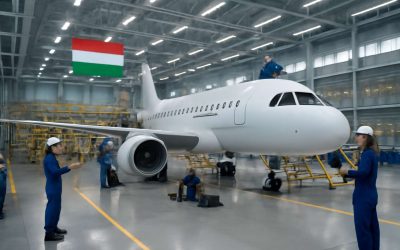History of Aviation and the Inception of Aeroplanes
Early Concepts of Flight – Ancient myths and early experiments with flight
Throughout history, the quest to conquer the skies has been more about dreams and daring than straightforward science. Ancient myths, like Icarus’s tragic flight or the Chinese legend of the wooden bird, hint at humanity’s long-standing obsession with flight. These tales, though fanciful, reflect an early curiosity about what it might take to soar like a bird. Early experiments with flight—think hot air balloons and gliders—were the prototypes of modern aeroplanes, driven by inventors eager to crack the code of human flight.
Fast forward to the 19th and early 20th centuries, when ingenuity exploded into a flurry of innovation. The pivotal question—who made aeroplanes—began to find its answer amidst the chaos of experimentation and competition. The Wright brothers, Orville and Wilbur Wright, are widely credited with building the first successful powered aeroplane in 1903. Their pioneering work involved meticulous trial and error, a dash of stubbornness, and a keen understanding of aerodynamics. They didn’t just invent a flying machine—they ignited a revolution that would ultimately make the world smaller and more connected.
Pioneering Inventors in Aviation – Overview of key figures before the 20th century
The dawn of human flight is a tale woven with the threads of curiosity, innovation, and relentless pursuit. Before the roaring engines and sleek wings of modern aeroplanes took to the skies, visionary minds laid the groundwork with experiments that challenged the limits of possibility. The question of who made aeroplanes remains a fascinating chapter in this saga, etched into history by pioneers whose ingenuity defied convention.
Long before the Wright brothers’ triumph, inventors and explorers dared to dream of soaring through the clouds. Figures like Sir George Cayley, often called the “father of the aeroplane,” meticulously studied aerodynamics, laying theoretical foundations that would later be realised in steel and fabric. Cayley’s designs, inspired by the flight of birds, introduced the concepts of lift and propulsion that are still fundamental today.
In the shadow of these early innovators, others like Hiram Maxim attempted to push the envelope with enormous steam-powered flying machines. Yet, it was the meticulous craftsmanship and scientific approach of the Wright brothers that ultimately answered the question—who made aeroplanes—by creating the first successful powered, controlled, and sustained heavier-than-air flight in 1903. Their pioneering spirit ignited a revolution, transforming the dream of human flight into a tangible reality that continues to evolve to this day.
The Birth of the Modern Aeroplane – Breakthroughs leading to practical aircraft
The journey from flight dreams to practical aircraft was marked by relentless innovation and scientific breakthroughs. As early as the late 19th century, inventors began to crack the code of aerodynamics, setting the stage for what would become the modern aeroplane. These pioneering efforts weren’t just about dreaming big; they involved meticulous experimentation and a deep understanding of lift, thrust, and control.
Key developments in the history of aviation include the realisation of heavier-than-air flight, which was a turning point in the inception of aeroplanes. The Wright brothers, often celebrated as the first to make aeroplanes, achieved their historic flight in 1903, demonstrating that powered, controlled flight was possible. Their work laid the foundation for the aeroplane industry we see today.
By the early 20th century, breakthroughs in engine design, materials, and aerodynamics transformed aviation from experimental gliders into reliable, practical aircraft. These innovations answered the pressing question of who made aeroplanes and sparked an era of rapid advancement that continues to soar.
Key Inventors and Innovators in Aircraft Development
The Wright Brothers – Orville and Wilbur Wright’s pioneering flights
In a world cloaked in shadows and steel, the question lingers—who made aeroplanes? It was not merely the product of a single mind, but a crucible of relentless innovation and unyielding ambition. Among the most pivotal figures are the Wright Brothers, whose pioneering flights cast a dark, indelible mark upon the fabric of history. Their story is one of obsession, a relentless pursuit of flight that defied the grim laws of nature.
Orville and Wilbur Wright, often shrouded in myth and mystery, are credited with the first sustained, controlled, powered flight in 1903. Their achievement was no accident but the culmination of meticulous experimentation and a fearless confrontation with the unknown. Their aeroplane, the Flyer, was a ghostly vessel that sliced through the ether, whispering secrets of the skies to those daring enough to listen.
To understand who made aeroplanes, one must look beyond the Wright Brothers. Pioneers like Samuel Langley, who sought to tame the air with grandiose visions, and Alberto Santos-Dumont, whose daring feats in France pushed the boundaries of flight, all contributed to this macabre ballet of progress. Yet, it was the Wrights who truly unlocked the secret chamber of human-powered flight, forever altering the destiny of mankind.
Other Notable Inventors – Luigi Segre, Alberto Santos-Dumont, Glenn Curtiss, and others
Throughout history, the question of who made aeroplanes has sparked countless debates, yet it is a tapestry woven from myriad inventive threads. Beyond the legendary Wright Brothers, other pioneers etched their indelible mark on the evolution of flight. Luigi Segre, for instance, contributed to the aerodynamic advancements in Italy, pushing the boundaries of aircraft design with innovative materials and engineering finesse. His work exemplifies how individual ingenuity can catalyse monumental shifts in aviation technology.
Alberto Santos-Dumont’s daring exploits in France challenged the very notion of flight, demonstrating that human ambition could transcend national borders. His spirited attempts to achieve powered flight in the early 20th century inspired a generation of aviators and engineers alike. Meanwhile, Glenn Curtiss in America harnessed the nascent principles of aerodynamics, developing aircraft that combined agility with stability, proving pivotal in the race to answer the enduring question: who made aeroplanes?
In addition to these titans, a host of other inventors shaped the skies, including Louis Breguet, who pioneered innovations in aircraft control systems, and Henry Farman, whose light, manoeuvrable planes advanced both military and civilian aviation. Their collective efforts formed a mosaic of relentless experimentation and daring vision, each contributing vital pieces to the puzzle of human flight.
Contributions of Engineers and Scientists – Innovations in aerodynamics, propulsion, and materials
Behind every aircraft soaring through the skies lies a mosaic of innovation, driven by engineers and scientists whose breakthroughs transformed human flight from fragile dreams into tangible reality. These pioneers didn’t merely invent; they relentlessly refined aerodynamics, propulsion, and materials, each discovery edging us closer to the skies we now take for granted.
Consider the evolution of aerodynamics—an intricate dance of airflow and pressure that determines an aircraft’s stability and efficiency. Engineers like Louis Breguet revolutionised aircraft control systems, enabling pilots to command with unprecedented precision. Meanwhile, advancements in propulsion systems, from piston engines to jet turbines, reshaped the very heartbeat of aeroplane performance.
Materials science also played a pivotal role. The utilisation of lightweight composites and high-strength alloys made aircraft both more resilient and more fuel-efficient. This relentless pursuit of better materials and innovative engineering answers the question of who made aeroplanes by revealing the collective human obsession with pushing boundaries.
- aerodynamic efficiency
- propulsion innovations
- advanced materials
Each element underscores the profound ingenuity that propels aviation forward, driven by those who dared to ask: who made aeroplanes?
The Evolution of Aircraft Manufacturing
Early 20th Century Manufacturing – From handcrafted aircraft to mass production
Imagine a time when the sky was an uncharted frontier, awaiting daring souls to unlock its secrets. In the early 20th century, the journey from handcrafted aircraft to the marvels of mass production was nothing short of revolutionary. As the demand for faster, safer, and more reliable aeroplanes grew, manufacturing processes evolved from meticulous manual craftsmanship to intricate assembly lines that could produce aircraft at unprecedented speeds. This transformation was driven by visionary engineers and pioneering companies who understood that who made aeroplanes would define the future of flight.
By embracing innovations in materials, aerodynamics, and propulsion, early aircraft manufacturers set the stage for the modern aviation industry. They developed techniques that allowed for the rapid production of aircraft, ensuring that aeroplanes could reach broader audiences—military, commercial, and recreational alike. The rise of mass production techniques, reminiscent of the automotive industry’s assembly lines, made it possible for aircraft to become not just a marvel of engineering but a symbol of global connectivity. This era marked a pivotal chapter in the history of who made aeroplanes, shaping the skies we navigate today.
Major Aircraft Manufacturers – Companies like Boeing, Airbus, and Lockheed Martin
The evolution of aircraft manufacturing is a story of relentless innovation and strategic vision. Major aircraft manufacturers such as Boeing, Airbus, and Lockheed Martin have shaped the skies we traverse today. Their pioneering efforts transformed the industry from simple, handcrafted planes into complex marvels of modern engineering, making air travel accessible and reliable for millions worldwide.
These companies didn’t just build aircraft; they revolutionised the very process of who made aeroplanes. Today, Boeing, for instance, stands as a giant in commercial aviation, producing aircraft like the 787 Dreamliner that combine efficiency with cutting-edge technology. Airbus, a European powerhouse, introduced the A380—the world’s largest passenger airliner—pushing the boundaries of size and capacity.
Meanwhile, Lockheed Martin has played a pivotal role in military aviation, developing aircraft that have defined national security. The evolution of aircraft manufacturing also involved a shift towards global collaboration, with supply chains spanning continents. This international dimension underscores the fact that who made aeroplanes is no longer confined to a single nation but is a complex, interconnected enterprise.
Innovations in Aircraft Production – Advances in technology, materials, and assembly lines
The story of who made aeroplanes is a saga of relentless technological breakthroughs and daring innovation. As aircraft evolved from fragile wood-and-cloth contraptions to sleek marvels of modern engineering, the manufacturing process itself underwent a radical transformation. Advances in technology, materials, and assembly lines propelled this evolution, turning aviation from a risky endeavour into a highly precise industry.
One of the most significant leaps was the adoption of lightweight, durable materials such as aluminium alloys and composite fibres. These innovations allowed aircraft to become more fuel-efficient and capable of longer flights. Meanwhile, the introduction of sophisticated assembly lines—famously pioneered by companies like Boeing—revolutionised production, slashing manufacturing times and increasing output. This industrial finesse made it possible to answer the perennial question of who made aeroplanes — a question that today extends beyond national borders into a sprawling, interconnected supply chain.
In essence, the evolution of aircraft manufacturing is a story of continuous technological ingenuity, where every new innovation brought us closer to the high-performance aircraft that dominate our skies today. From early handcrafted craft to the high-tech jets flying overhead, the journey of who made aeroplanes remains one of the most fascinating tales of human ingenuity and industrial prowess.
The Role of Aviation Pioneers and Their Impact
Milestones in Aviation History – First flights, transatlantic flights, jet age
In the shadowed corridors of history, the question of who made aeroplanes remains a tapestry woven with daring dreams and relentless pursuit. The pioneers of aviation—those daring souls who dared to defy the heavens—set the stage for mankind’s conquest of the skies. Their impact is etched into milestones like the first powered flight, a moment when Orville and Wilbur Wright’s fragile craft soared above Kitty Hawk, forever altering the fabric of human endeavour.
Spurred by insatiable curiosity, these visionaries pushed the boundaries through transatlantic flights, whispering promises of a connected world. The jet age then roared into existence, transforming fragile wood-and-wire contraptions into sleek, metal monsters that sliced through clouds with ruthless efficiency. It was their relentless innovation, often born from shadows of doubt, that propelled the evolution of aircraft manufacturing—an unyielding quest to conquer the skies. Who made aeroplanes? It was those dreamers, engineers, and inventors whose shadows still loom large in aviation’s dark, infinite sky.
Influential Personalities – Charles Lindbergh, Amelia Earhart, Juan Trippe
The pantheon of aviation’s greatest icons includes individuals whose daring feats and relentless ambition reshaped the skies themselves. Among these, Charles Lindbergh stands as a symbol of audacity—his historic transatlantic flight in 1927 not only proved that “who made aeroplanes” could soar across oceans but also ignited a global fascination with long-distance flight. Similarly, Amelia Earhart’s pioneering spirit broke gender barriers and set records that still inspire generations of aviators. Her daring solo flight across the Atlantic was more than a stunt; it was a testament to the power of vision and perseverance.
Then there’s Juan Trippe, the visionary behind Pan American World Airways, who transformed commercial aviation into a sophisticated industry. His leadership helped popularise flying as a practical means of transportation, elevating who made aeroplanes from mere machines to symbols of modern progress. These personalities exemplify how individual ingenuity and fearless pursuit of the impossible continue to shape aviation’s narrative. Their legacies are woven into the very fabric of who made aeroplanes, reminding us that behind every aircraft stands a story of relentless innovation and daring dreams.
How Inventors Shaped Modern Air Travel – Technological and infrastructural advancements
The evolution of air travel is a testament to human ingenuity and relentless pursuit of progress. Pioneers of aviation didn’t just invent aircraft; they fundamentally transformed how we connect across the globe. Their innovations laid the groundwork for the modern skies we navigate today, making it crucial to understand who made aeroplanes and how their contributions shaped this dynamic industry.
From early experiments with lightweight materials to groundbreaking advancements in aerodynamics, inventors and engineers continuously pushed the boundaries of what was possible. Technological strides such as jet engines, composite materials, and computer-aided design revolutionised aircraft manufacturing. These innovations didn’t happen in isolation but were driven by a network of visionary minds dedicated to pushing aviation beyond its limits.
- Development of reliable propulsion systems
- Introduction of streamlined, fuel-efficient designs
- Implementation of mass production techniques to meet soaring demand
Each of these milestones is a testament to the enduring quest to answer the question of who made aeroplanes. In essence, it was the collective effort of inventors, engineers, and visionaries—each building upon previous achievements—that transformed air travel from a dream into an everyday reality. Their work continues to influence the aerospace industry today, shaping the way we fly and connect in the modern world.
Modern Aircraft Design and Who Continues the Legacy
Contemporary Aircraft Innovators – Leading aerospace companies and their engineers
Modern aircraft design is a marvel of engineering, built on a legacy that spans over a century. The question of who made aeroplanes may seem straightforward, but it’s a story of continuous innovation and relentless pursuit of flight excellence. Today’s leading aerospace companies and their engineers push boundaries with advanced materials, aerodynamics, and propulsion systems, shaping the future of air travel.
Contemporary aircraft innovators like Boeing, Airbus, and Lockheed Martin are at the forefront. Their teams of engineers develop aircraft that are safer, more efficient, and environmentally friendly. These companies have perfected manufacturing processes that incorporate composite materials and digital assembly lines—technologies that were unimaginable a few decades ago. Their work ensures that the age-old question of who made aeroplanes evolves with each generation, blending tradition with cutting-edge innovation.
By continually refining aeroplane design, these companies uphold the legacy of early pioneers while pioneering new horizons in aerospace technology. It’s a dynamic industry driven by dedicated engineers and visionary corporations committed to transforming how humanity travels through the skies.
Sustainable Aviation Efforts – Electric planes, eco-friendly materials
Modern aircraft design is a testament to human ingenuity, blending sophisticated aerodynamics with cutting-edge materials. Today’s aerospace engineers are pushing the envelope, crafting aircraft that are not only more fuel-efficient but also environmentally conscious. This relentless pursuit of sustainability has given rise to electric planes and the utilisation of eco-friendly materials, ensuring that the question of who made aeroplanes continues to evolve in tandem with technological advancements.
Leading aerospace companies such as Boeing and Airbus are now at the forefront of sustainable aviation efforts. Their teams of dedicated engineers are pioneering innovations like hybrid-electric propulsion systems and lightweight composite structures. These advancements serve as a testament to how the industry is integrating ecological considerations into every facet of aircraft design. The continual refinement of these elements indicates that the story of who made aeroplanes is, in fact, a narrative of ongoing progress rather than a historical footnote.
To illustrate, some of the most exciting developments include:
- Electric propulsion systems that reduce carbon emissions
- Use of biodegradable and recycled materials in aircraft manufacturing
- Implementation of digital manufacturing techniques to minimise waste
As the industry advances, the legacy of early pioneers remains a guiding star—intertwined with contemporary efforts to make flying more sustainable. The quest to answer who made aeroplanes is no longer solely about reaching new heights; it’s about doing so responsibly, with innovation and environmental stewardship hand in hand. Truly, the future of flight is being shaped by those who dare to reimagine what aircraft can be—one eco-conscious design at a time.
Future of Aircraft Development – Autonomous flying, supersonic jets, space tourism
The evolution of aircraft design is a testament to relentless human ingenuity, pushing boundaries from the earliest dreams of flight to the sophisticated machines of today. As we stand on the cusp of revolutionary advancements, the question of who made aeroplanes takes on new dimensions—transcending mere invention to encompass a broader narrative of innovation and environmental consciousness.
Modern aircraft development is no longer solely about reaching higher or faster; it’s about redefining what flight can be in an era increasingly committed to sustainability. Leading aerospace companies such as Boeing and Airbus—whose names are synonymous with the history of who made aeroplanes—are now spearheading efforts that blend cutting-edge technology with eco-conscious design. Their teams of engineers are pioneering electric propulsion systems, lightweight composites, and autonomous flying capabilities, shaping a future where aircraft are smarter, greener, and more responsive than ever before.
Within this landscape, several groundbreaking innovations are reshaping the industry:
- Electric propulsion systems that significantly reduce carbon emissions, offering cleaner skies and quieter operations.
- Utilisation of biodegradable and recycled materials, underscoring a shift towards sustainable manufacturing processes.
- Implementation of digital manufacturing techniques, minimising waste and enhancing precision in aircraft assembly.
As these technological marvels continue to evolve, the story of who made aeroplanes remains a vibrant tapestry—interwoven with the pioneering spirits of inventors, engineers, and visionaries. Today, the future of aircraft development is a collaborative symphony of innovation, driven by a desire not just to reach new heights but to do so responsibly. The legacy of those early pioneers lives on, inspiring contemporary efforts to reimagine flight with ecological stewardship at the core. In this way, the question of who made aeroplanes is no longer confined to history but becomes an ongoing quest for sustainable excellence—where the boundaries of possibility are continually being expanded.




0 Comments